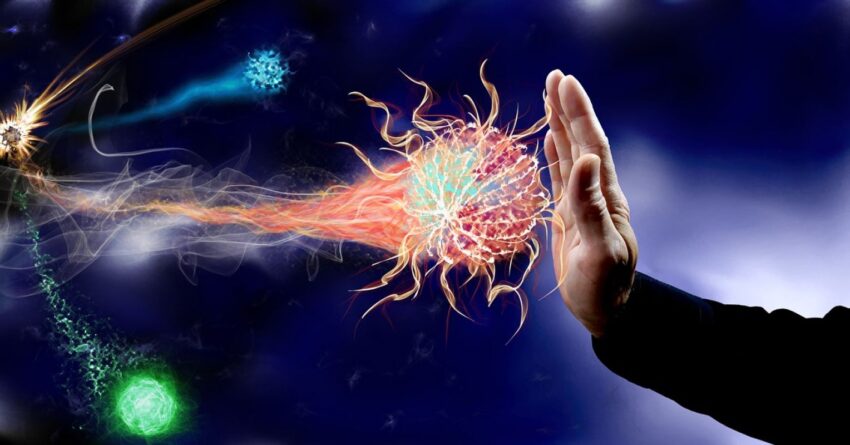In the peculiar world of quantum mechanics, particles exhibit both wave-like and particle-like properties, and they can be described as having wave functions. Out of this strange world, the possibility of new science emerges in collective duress. Think of duress as the mental equivalent of the stress someone feels when they realize they left the stove on after they drove away—it’s the stress people feel about undefined future events, the ones that force them to experience a future they’d rather avoid.
Imagine that big objects, like human brains, have wave functions. In fact, everything that we think of as solid has a wave function that can be calculated. (Physicists calculate wave functions by solving Schrödinger’s equation, which helps predict where a particle is likely to be and how it behaves over time.) Now imagine these wave functions could overlap, creating a bigger, shared wave function—like a roomful of tuning forks that lock onto one another with the same resonance when just one is struck. This idea is similar to how particles behave in quantum mechanics. When these wave functions overlap, they can form a larger wave function, leading to something called Bose-Einstein condensates (BECs). BECs are states of matter formed when particles called bosons are chilled to temperatures just a bit above absolute zero. At this point, they stop acting like individual particles and start behaving like one giant, coherent wave. [1] It’s like a football game where the wave begins with one fan and then picks up steam and travels around the stadium in perfect sync, only much colder and with fewer screaming fans.
Here’s where it gets interesting. If human brains have wave functions that overlap, they could form a collective wave function representing shared thoughts, emotions, and, yes, stress. This could explain collective duress—where a group of people experiences a unified sense of anxiety. And because scientific experiments with BECs show that when particles form a collective state, they lose their individual identities and become one, if we stretch this analogy a bit, we could say that people in a stressed-out group lose their distinct worries and contribute to a massive, undulating wave of collective anxiety. It’s interesting that the 2024 results of the American Psychiatric Association’s annual mental health poll show that U.S. adults are feeling increasingly anxious. In 2024, 43% of adults say they feel more anxious than the previous year, from 32% in 2022 to 37% in 2023.[2]

Source: Getty Images
So what’s the remedy? Enter Bob Newhart, the comedian with a no-nonsense approach to therapy. In a classic sketch, he tells a patient with deep-rooted fears and phobias to simply “stop it.” It’s hilariously blunt and, at the same time, holds a grain of truth. Newhart’s “stop it” method suggests that sometimes the best way to deal with stress and anxiety is to take a deep breath and, well, stop it. In quantum terms, this would mean collapsing the collective wave function of duress. By deciding to “stop it,” individuals can potentially disrupt the resonance of their overlapping wave functions, reducing the overall collective anxiety. This isn’t just a comedic treasure; it aligns with cognitive-behavioral techniques therapists use to manage stress and anxiety.[3] Actively challenging and changing negative thought patterns can alter one’s mental state, similar to how a quantum wave function collapses into a single, more manageable state. Newhart’s approach might be the mental jolt needed to shift focus and break the cycle of collective stress.
Moreover, just as a single particle can influence the overall state of a BEC, an individual’s decision to manage their stress can ripple out, influencing the collective emotional state. This collective shift can lead to a more positive and less stressful future, freeing everyone from the perceived inevitability of unwanted outcomes. By embracing Bob Newhart’s blunt “stop it” approach, we may be able to collapse our collective wave of anxiety and foster a more serene collective mental state—effectively addressing the shared stresses of modern life instead of being forced to experience a future we’d rather avoid.
